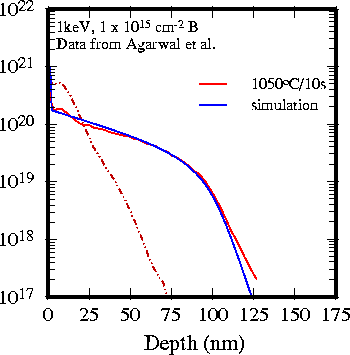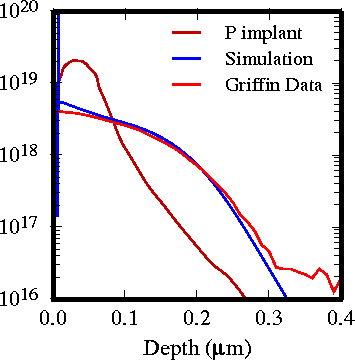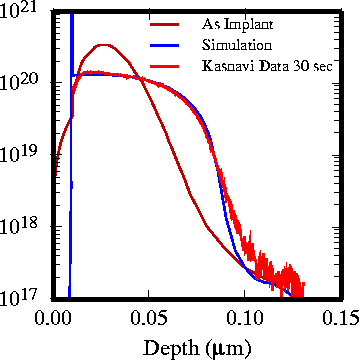
A TED simulation of a medium energy boron implant.
A cluster model ( using B3I clusters) for boron and
a analytic model for interstitial type {311} defects
was used for this simulation.
Online Demo of PMM
Do a web based simulation to test our models. This is available only to SRC member companies. Use the same password as used for the distribution.
Thus, one form of software gave you no flexibility, while the other required you to do the same work over and over, giving way to bugs. We attack this dilemma by writing reusable modules that can be incorporated into input decks of PDE solvers. This will keep the flexibility of a PDE solver, while providing reasonable defaults for models and parameters.

A TED simulation of a medium energy boron implant.
A cluster model ( using B3I clusters) for boron and
a analytic model for interstitial type {311} defects
was used for this simulation.

Simulation of an ultra shallow B junction.

30 keV, 1.2e14 phosphorus implant annealed for 30 min at 800 C.
Atleast 50% of the implant dose is lost to the interface as predicted.

1e15, 32 keV As implant annealed at 1050 C for 30 s.